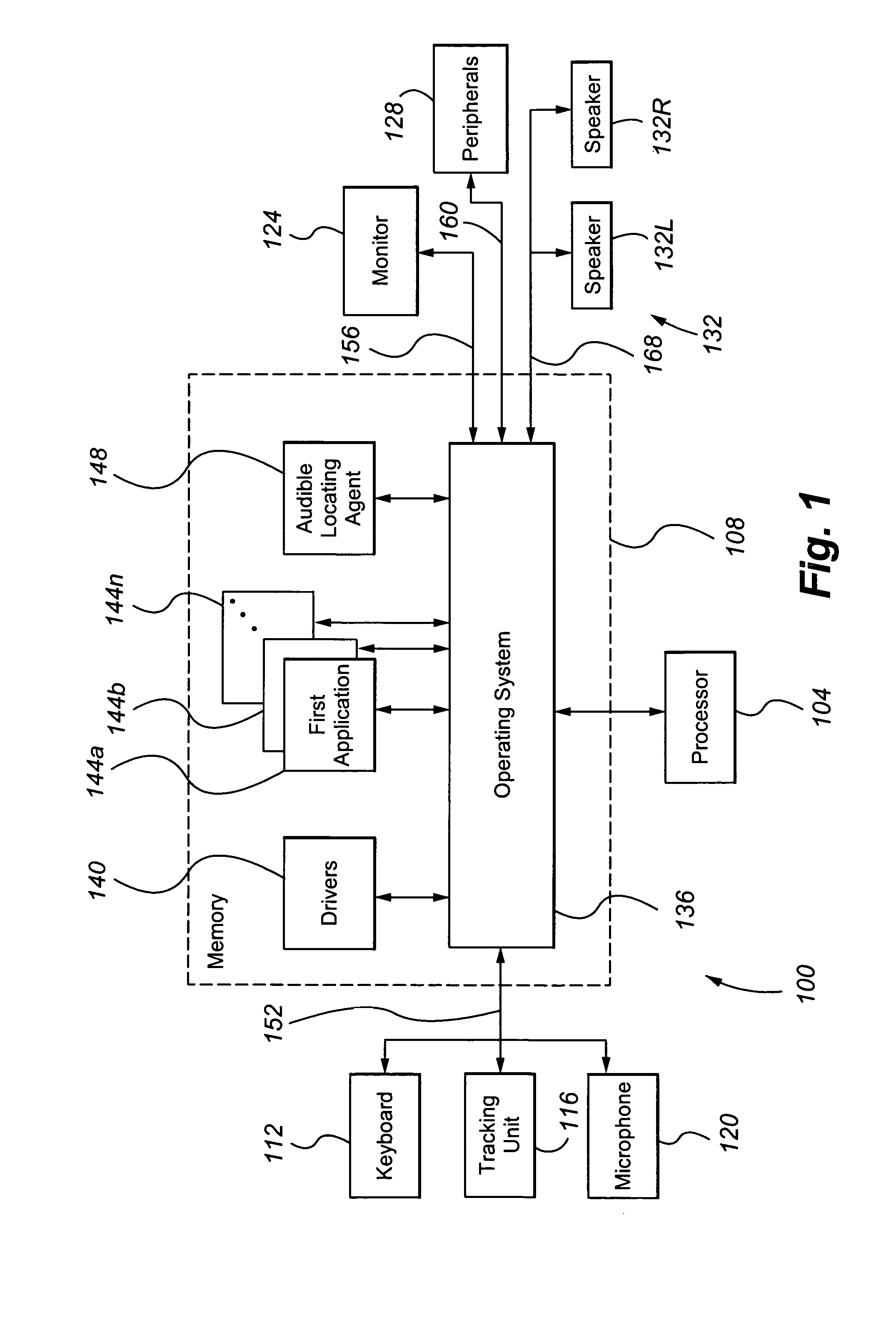Audible computer user interface method and apparatus
a computer and user interface technology, applied in computing, instruments, electric digital data processing, etc., can solve the problems of increasing the crowded icon space of the display tool bar, reducing the productivity of the operating system, and reducing the attractiveness of the user, so as to improve the ability of users to multitask and identify quickly and conveniently, and improve the productivity of the general publi
- Summary
- Abstract
- Description
- Claims
- Application Information
AI Technical Summary
Benefits of technology
Problems solved by technology
Method used
Image
Examples
Embodiment Construction
[0036]A computer system 100 according to the present invention is depicted in FIG. 1. The system 100 includes a processor 104, memory 108, keyboard 112, a tracking unit 116, microphone 120, monitor 124, speaker array 132 (with 132R and 132L signifying the right and left speakers in the array), and (other) peripherals 128. The keyboard 112, tracking unit 116, microphone 120, monitor 124, speakers 132, and peripherals 128 are generally external to the computer (which includes the processor 104 and memory 108) and are connected to the computer by serial or parallel links (e.g., serial or parallel buses).
[0037]The processor 104 is a functional unit that interprets and executes instructions. It typically includes instruction control and arithmetic and logic units. It is commonly an integrated circuit containing central processing units. A typical processor is a microprocessor.
[0038]The memory 108 can be any storage medium and includes all of the addressable storage space in the system 10...
PUM
 Login to View More
Login to View More Abstract
Description
Claims
Application Information
 Login to View More
Login to View More - R&D
- Intellectual Property
- Life Sciences
- Materials
- Tech Scout
- Unparalleled Data Quality
- Higher Quality Content
- 60% Fewer Hallucinations
Browse by: Latest US Patents, China's latest patents, Technical Efficacy Thesaurus, Application Domain, Technology Topic, Popular Technical Reports.
© 2025 PatSnap. All rights reserved.Legal|Privacy policy|Modern Slavery Act Transparency Statement|Sitemap|About US| Contact US: help@patsnap.com



